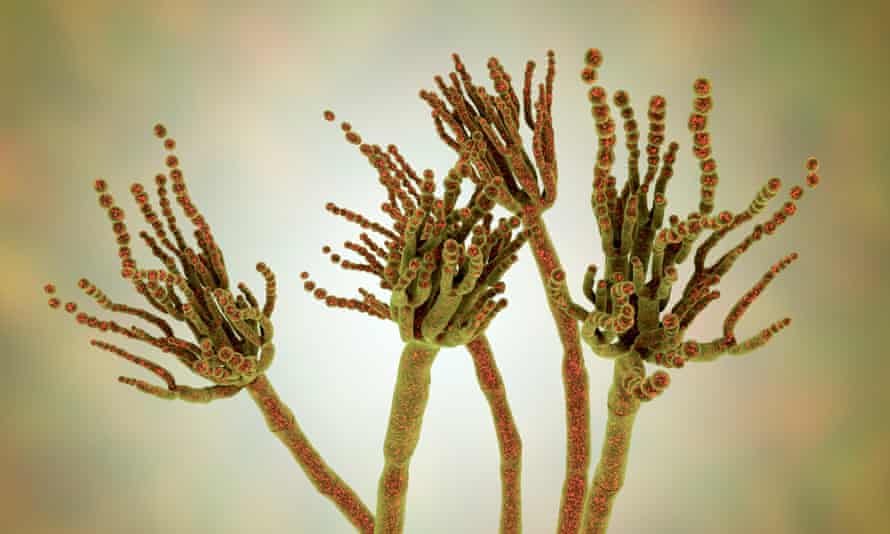According to legend, the mould in blue cheese was discovered by a distracted shepherd – while that may not actually be the case, the truth is equally fascinating …

Mould is everywhere. Anyone who has seen the little black spores cling to their bathroom ceiling or smelled spoilt food in their fridge will be familiar with this fact of life. While there’s reason to feel squeamish about some of these microorganisms, if you can get past your squeamishness you’ll discover that moulds and other fungi are fascinating. They are crucial in maintaining ecosystems where they help plants to grow and even to communicate with one another.
Humans have been harnessing the power of fungi for medical purposes for thousands of years, and nowadays they play a role in anything from antibiotics to drugs such as cyclosporine, developed from the fungus Tolypocladium inflatum, which can be used as an immunosuppressant to help prevent donated organs being rejected.
Another area where fungi, particularly moulds, are important is in the production of popular foods. Soy sauce, fermented meats and cheeses are just some of the foods that owe their existence to mould. But it is in cheese, especially blue cheese, that mould plays its most recognised and, arguably, delicious role.
The origins of blue cheese are vague, but the story goes that, in the seventh century, a shepherd in the southern French village of Roquefort (literally meaning “strong rock”) left his lunch of bread and sheep’s cheese in a cave when distracted by a local girl he saw in the distance. Many months later, the same shepherd apparently stumbled on his abandoned meal only to find it contaminated with Penicillium roqueforti, a mould that grew within the cave’s soil. It is not clear why the shepherd decided to consume his rediscovered meal, but since then Penicillium roqueforti has become a mould typically used in many blue cheese varieties, especially Saint Agur.
The origins of blue cheese may be a myth, but the science of how Penicillium roqueforti is responsible for the flavour of Saint Agur and all other blue cheeses is just as fascinating as any legend.

What is mould?
As with other fungi, mould is found in natural environments that are damp and rich in nutrients (forest soil, wood and, of course, caves). Moulds are decomposers, which means they break down organic materials that other species, such as invertebrates, struggle to digest. In doing so, they release into the soil soluble nutrients that plants and trees use to grow. Unlike plants, mould does not reproduce through seeds but rather spores, the dusty stuff that appears on top of mould, which floats through the air when released and begins to germinate when the microscopic particles land in hospitable environments.
The spores then produce interwoven, thread-like structures known as hyphae, which become what are called mycelium when massed together. Mycelia are considered single organisms, but they can stretch underground for considerable distances. In fact, recent research has shown that the mycelia of some fungi form symbiotic relationships with plant and tree roots, resulting in underground networks where the host plants can exchange nutrients, water and information. These networks are called mycorrhizae and are often likened to the internet and have been called the “wood wide web”. Their existence is forcing the scientific world to rethink their understanding of plants more generally.
Penicillium roqueforti is part of the same genus (Penicillium) as the key mould species used in many modern antibiotics. First identified by the Scottish bacteriologist Sir Alexander Fleming as a potential agent in the fight against infection in 1928, it took another 10 years for a team of scientists at the University of Oxford to develop the world’s first antibiotic compounds from moulds such as Penicillium chrysogenum (sometimes known as Penicillium notatum) and Penicillium rubens. The mould itself does not kill bacteria but produces penicillin as a natural product, which attacks the cell walls of a wide range of bacteria.
So what does this have to do with cheese?
To create blue cheese, there are a variety of methods used by cheesemakers for different cheese types. Some still rely on mother nature and simply age their cheese in clement environments where the mould will naturally infect the wheels. Saint Agur, for instance, matures for 10 weeks in caves to allow for the mould to grow and give Saint Agur its unique taste and texture. Most manufactures, however, introduce powdered Penicillium roqueforti cultures to the cheese milk before the milk is coagulated and the curd is separated from the whey.
Once the cheese has been moulded into shape, it is left to mature. It is at this point, in the early stages of the maturing process, that stainless steel rods are forced into the cheese to permit exchange between oxygen from the air and carbon dioxide produced by the mould in the cheese’s interior. This encourages the growth of mould and gives rise to the characteristic blue-green veins that run through this type of cheese.
It is the presence of the mould and the enzymes it produces that are responsible for the colour, flavour and texture of the cheese. The mould raises the acidity (pH level) of the cheese, which changes its texture and flavour, while also breaking down proteins in the cheese to give it a softer, creamier consistency. The moulds also have a strong lipolytic action that breaks down fats, producing fatty acids, known as ketones, that give the cheese its rich flavour and powerful aroma.
So next time you reach for some Saint Agur, remember that the mould has put a lot of work into making it the ideal companion for your crackers.
Discover delicious ways to enjoy Saint Agur every day
https://www.theguardian.com/blue-cheese-every-day/2021/mar/31/what-does-the-blue-in-blue-cheese-do-and-how-does-it-get-there?CMP=GLabs&utm_medium=sfbk&utm_source=pdscl&utm_campaign=Glabs&fbclid=IwAR0bdVLztYmSKB-WB9EMWhTSDr7OtAauTjugmY8u-uKC-qecqQOuEJn8s4s#Echobox=1618244943
No comments:
Post a Comment